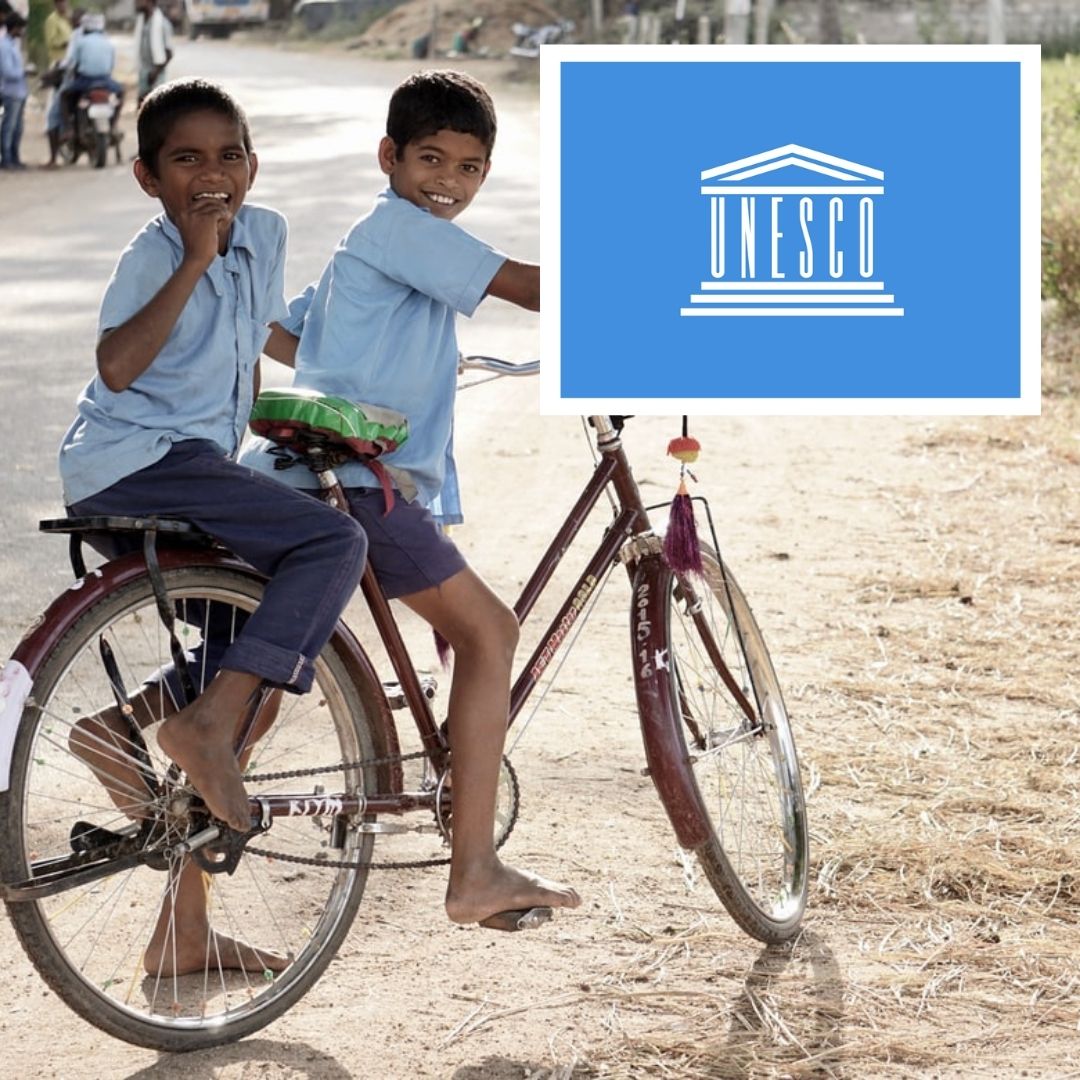Adverse Teacher-Pupil Ratio Despite Increase In Availability Of Teachers: UNESCO Report
Writer: Ratika Rana
Her primary objective is to inform, promote, educate and cultivate readers through writing.
India, 17 Feb 2022 9:21 AM GMT
Editor : Ankita Singh |
A literature lover who likes delving deeper into a wide range of societal issues and expresses her opinions about the same. Keeps looking for best-read recommendations while enjoying her coffee and tea.
Creatives : Ratika Rana
Her primary objective is to inform, promote, educate and cultivate readers through writing.
The United Nations' Sustainable Development Goals (SDGs) emphasized the importance of investing in professionally qualified teachers to achieve the goals of equitable, inclusive and lifelong learning opportunities for one and all.
Education in India and worldwide experienced a paradigm shift with the onslaught of the COVID-19 pandemic. More than 26 crore children were enrolled in schools in the academic year ending 2020. In the same year, government unaided schools accounted for the highest enrollment rate. Private schools accounted for 22.38 per cent of the total schools and witnessed a significant enrollment of 37.13 per cent.
Last year, the United Nations Children Educational, Scientific and Cultural Organization (UNESCO) released a report titled 'State of the Education Report for India 2021' on World Teachers' Day in 2021. The UN arm focussed on teachers. The report highlighted the ground reality "to inform and enhance the current and future programmes and policies aimed at the overall development of teachers in India".
The international organization believed that the theme of teachers, teaching and teacher education is essential in the current phase of Indian school education where the access milestone has been crossed. The system is required to deliver inclusive, quality education for all. The recent National Education Policy (NEP) 2020 and the COVID-19 pandemic form the context of this report.
Eric Falt, Director of UNESCO in New Delhi, said, "India has made enormous strides in the education sector in the past decades, and teachers have been integral in this progress. The National Education Policy 2020 recognizes and identifies teachers as the heart of the learning process. That is why we decided to dedicate the 3rd edition of our State of the Education Report for India. Without teachers, there can be no class".
Report Highlights Quality Of Teaching
The report highlighted that quality of teaching, education of teachers, and the teachers themselves are central to education. They were defined as the key stakeholders and enabled the education to receive its transformative potential for students across communities and aid in the overall national development. The United Nations' Sustainable Development Goals (SDGs) emphasized the importance of investing in professionally qualified teachers to achieve the goals of equitable, inclusive and lifelong learning opportunities for one and all.
The report highlighted that even though the availability of teachers has considerably improved in the last few years, the teacher-student ratio is still adverse in the higher secondary sector. Moreover, there is no information on the availability of teachers in creative subjects like music, dance, art and the like. Interestingly, the extent of availability and deployment of various subject teachers is also unknown. Almost all single-teacher schools are located in rural areas. The North-Eastern states of India need special efforts to improve the availability of qualified teachers and deployment, the report suggested.
Lack Of Basic Amenities For Teachers
The report also highlighted that teachers' working conditions in aspirational districts are poor due to the lack of basic amenities. For instance, a few sectors in education, primary education, early education for young children and specialized education, is highly feminized. Women resort to lesser salaries and take up teaching jobs to supplement their household incomes. On a similar note, the report highlighted in the next 15 years, 27 per cent of the teaching workforce would have to be replaced. At the current student strength rate, the education system faces a deficit of nearly one million teachers. The deficit is likely to widen because of the shortage of teachers in certain levels and subjects' early childhood education, special education, physical education, music, arts, and curricular streams of vocational education.
The report has highlighted the urgent need to improve the teachers' quality, accountability, and governance in the education sector. Out of the 9.7 million teachers accounted for in 2019-2020, the government and unaided schools' sector held a majority share of over 50 per cent, whereas the private schools had nearly 33 per cent teachers. In secondary schools, the pupil-teacher ratio is alarming. Almost all of the 1.1 lakh schools with a single teacher are located in rural areas. On the other hand, the report also highlighted that the number of single-teacher schools has reduced by 5 per cent.
What Are The Key Aspects Of The Profession?
The report also highlights the critical aspects of the teaching profession, the complexities involved and their professional development. It also puts into light the questions that create tension in the job and develop a lack of quality and availability of the teachers. In the report, UNESCO also pointed out that many teacher education programmes in India run in self-funded colleges, and their geographic spread across the country is uneven. Very few programmes prepare teachers to provide special education, vocational education, arts and music. Nonetheless, admissions in the B.Ed programmes seemed stable.
On the other hand, students pursuing D.El.Ed and M.Ed. Admissions are currently shrinking. Some states see lower admission of students from science backgrounds in the absence of state-regulated admission processes.
What Is The Way Forward?
In the end, the UN organization also made several recommendations about improving the education standards in India. The report mentioned that it was imperative to enhance the number and quality of teachers in the north-eastern states, aspirational districts and rural areas. The report noted, "Special attention needs to be paid to rural areas, districts with high scheduled caste and tribe populations, and all across India's north-east, where the ratio of teachers to students needs to improve and be rationalized. Working conditions in these 'difficult to staff' regions also need to be improved, including basic amenities, better provisioning of libraries, and access to information and communications technology (ICT). More state support for teacher education programmes is desirable in these regions".
Apart from that, UNESCO also recommended observing teachers as frontline workers in the country. The UN body advised respecting the autonomy of teachers and restructuring the system. In conclusion, the report highlighted how pre-entrant teaching is essential for new and young teachers to provide them with more profound knowledge and understanding that would enable them to teach differently from how they learnt. Teaching standards should ultimately aim for professional development rather than standardized numbers.
Also Read: Here's How This Bangalore-Based Silk Startup Aims To Preserve Authenticity Of Handwoven Silk Sarees
 All section
All section















